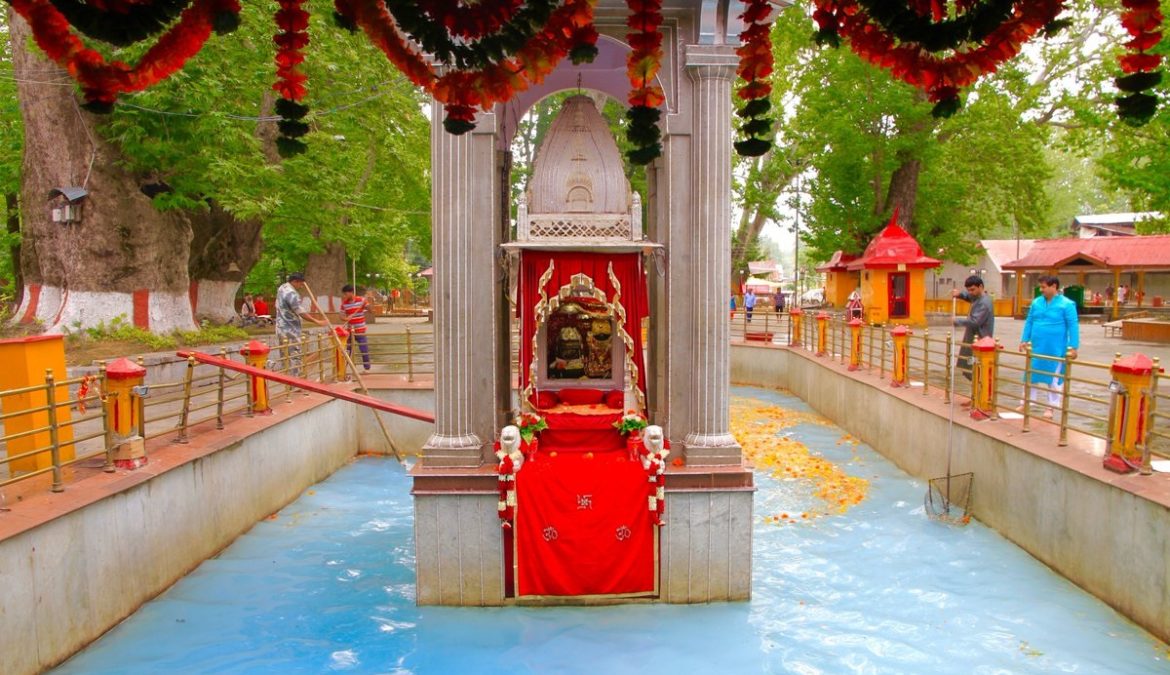Losing home and hearth is devastating. Kashmiri Pandits lost it in 1990 as guns started rattling in Kashmir. The loss, pain, gloom can’t be weaved in words. Sanjay Sapru suggests some policy recommendations for the dignified and safe return of the natives.
On August 8, 2019, Prime Minister Narendra Modi reached out to the Nation, explaining the rationale of scrapping the special status granted to Jammu and Kashmir. The move, as he referred to, will “liberate” the people of the region and bring them closer to the rest of the country. He further emphasised the developmental and political benefits that are expected to flow from these arrangements.
This set the stage for Mr. Modi’s ‘Naya Kashmir Vision’ based on Development, Prosperity & New Leadership. However, nine months down the line, Kashmiri Pandits are yet to figure out the priorities and promises for them.
On March 31, 2020, Government of India issued gazette notification in regard to the domicile matters in the UT of J&K, which addressed most of the concerns of deprived Kashmiri Pandit community.
During NDA led BJP rule 1.0, no concrete steps were taken for the return and rehabilitation of KPs. It was clearly mentioned in NDA 2.0 manifesto that KPs will have a dignified return.
“We will make all efforts to ensure the safe return of Kashmiri Pandits and we will provide financial assistance for the resettlement of refugees from West Pakistan, Pakistan Occupied Jammu and Kashmir (POJK) and Chhamb.”
It was a poll plank. 86 % of the votes polled by the migrants in 2019 election were polled in favor of BJP.
The BJP Government has made considerable progress on the removal of Article 370 and 35A and reorganization of the erstwhile state and fully integrated Jammu Kashmir with the rest of India as a UT. However, the exiled community had pinned hopes, in NDA 2.0, to see a blueprint of their return. The hope met disappointment as it is disheartening to note that no funds have been allocated in the overall 1 lac crore budget, for the cause of resettlement of the Pandit community in the valley.
Return of Kashmiri Pandits to the valley shall be possible only if the Govt.of India takes concrete steps in this direction. The following recommendations could be taken into account as a prerequisite for such gradual development in terms of the return of the Pandits to the Valley.
Smart City/Satellite Township
There could be an attempt to develop a ‘Satellite Township’ preferably based on the concept of ‘New Smart City’, where the settlement of Kashmiri Pandits along with other communities can take place. The township should be self-sufficient in terms of security, infrastructure, economic avenues, decent housing, educational institutions, health care facilities, recreation centers, commercial complexes, etc. To begin with- KP employees in Kashmir, under the PM package, could be settled in such townships.
Instead of giving a housing flat, the KP residents should be given the ownership of land along with a time-bound interest-free loan to build their houses on the allocated land. This will help in creating a sense of ownership and attachment. In case this model is successful, it will encourage the return of Kashmiri Pandits in large numbers.
The most feasible approach to address the settlement of Kashmiri Pandits in the valley should be based on the lines of Srinagar Smart City Project approved in 2016. In 2017, the implementation of Smart City Project was envisaged to be done by a Special Purpose Vehicle (SPV) created for the purpose, under which all the components of Smart City Project like planning, appraisal, approval, the release of funds, implementation, management, operation, monitoring, and evaluation would be done. Something similar could be mandated for the proposed Township with a proper implementation plan and timeline put into place.
Specific Recommendations
1. Employment Package: The employment package announced earlier for the displaced unemployed persons of the exiled community needs a relook in view of the enormous hardships faced by our youth, who had taken up employment in the Valley, as part of the Prime Minister’s package. To illustrate the institutional apathy existing at the administrative level towards the displaced community, it is seen that even after so many years of the announcement of the scheme by the former PM, Dr Manmohan Singh for the creation of 6000 jobs, only a part of youth have been employed
2. Provision of Economic Assistance to the Displaced: With education as the USP of KP’s who were exiled from the valley, they are working in the frontiers of medicine, IT, Tourism, corporate world, Media, social sectors, healthcare, education, etc across the world. It would be more fruitful if their services are utilized in the building of ‘Naya Kashmir’ to kick start economic activity and enable them to re-establish their broken links with the valley.
3. Removing Encroachments: It is a bitter fact that when KP’s left, their land, and properties were encroached. The UT administration must gear up to chalk out a strategy to get back the land and properties belonging to displaced Kashmiri Pandits.
4. Passage of Temples and Shrines Bill: After the exodus of the community from Kashmir in 1989-90, the temples, shrines, pilgrimage centers, Matts, etc., which represent our age-old heritage, handed down through hundreds of years of continuing tradition, have suffered enormously due to neglect and poor management. I don’t deny that some temples were taken care of by some generous souls (read Kashmiri Muslims.)
But to protect and preserve these institutions of heritage, the draft bill (Temples and Shrines preservation bill) pending in the Legislative Assembly should be passed at the earliest, after taking all stakeholders on board. The UT/Union Government should come out with the factual position regarding the state of lands and estates attached to the temples and shrines.
5. Political Empowerment of Kashmiri Pandits: For over 70 years now, Kashmiri Pandits have remained politically disempowered. Earlier, some of the constituencies in Kashmir which had substantial numbers could elect one of their own to the State legislature. This resulted in Kashmiri Pandits losing their political relevance in the State. In fact, this was one of the many reasons which contributed to the community being marginalized over time. It is imperative that the displaced Kashmiri Pandits be empowered politically.
Conclusion
Return of Kashmiri Pandits to the Valley is essential in order to make Narendar Modi’s vision of ‘Naya Kashmir’ a reality and therefore concrete steps need to be taken, in order to provide a safe and dignified environment for their return.
It is true that 30 years down the line the divide between the two communities has increased. Both communities should realise the fact that development, prosperity and new leadership vision lies in our mutual brotherhood, compassion, collaboration and trust. The larger onus falls on the Kashmiri Muslim community
Efforts should be made to support township building / Smart City the formation of inter-community civic associations besides engagement of civil society and individuals from different walks of life to make this process of resettlement organic and smoother.
Views are personal!



